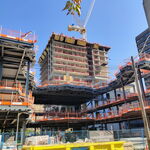Streety McCarface
Senior Member
600 passengers per day on 8 trains is pretty good, especially since most of those trains leave at insanely inconvenient times.Has any HSR advocate looked at the ridership numbers for the Kitchener GO Station? That should give you an indication of what kind of numbers HSR would attract (hint: it is not a large number).
The Kitchener-Toronto commuter market is about 10K roundtrips per day, which equates to about 6 million rides per year from Kitchener alone, that doesn't even include student ridership, reverse commuting, and anticipated growth.
By way of comparison, the Keystone corridor sees 1.5M passengers annually, the Acela Express sees 3.5M rides annually, and the Northeast Regional sees 9M rides annually. These are all profitable, high speed/higher-speed rail corridors in the US.
GO buses to Square One see 70 double-decker buses on Fridays, which are usually overcapacity. That equates to about 3,500 students making the commute every weekend. If they're willing to spend 20$ on uber regularly, I wouldn't be surprised if they're willing to spend 30$ to use a high-speed train to Toronto or the Airport.
Doubt it, Co-Op exists, so many students have a fair sum of money in their pockets. If this stingy attitude was the case, there would be more than 7 fedbus trips and fewer than 70 GO bus trips.^There’s no question that current ridership is way below what it could be if the service were faster and more frequent. The right question is, what is the upper end of that demand and what kind of envelope does that justify? I have trouble believing that the “most positive scenario” would justify full HSR. And, if one did offer HSR, what price point does that imply and what is the upper limit of price? An example is student travel - with improved GO, it’s quite possible for students to find daily commuting to be cost effective as compared to living in residence. But suppose an air-competitive HSR were built, and the price point was shifted to charge what the air travel market might bear. That student market might vanish. Students may appreciate a one hour commute, but would not pay a premium to go Kitchener to Union in 40 minutes.
My gut says that merely equalling or beating road travel is the optimum service model, even if it leaves some business travellers flying at higher fares.
- Paul




